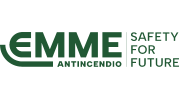|
Personal protective equipment (PPE) refers to protective clothing, helmets, goggles, or other garments designed to protect the worker body from injury. Protective equipment may be worn for job-safety and health purposes, as well as for sports and other recreational activities.
The purpose of personal protective equipment is to reduce employee exposure to risks when engineering and administrative controls are not operable or effective to reduce these risks to acceptable levels, but PPE has the serious limitation that it does not eliminate the danger at all. Any item of PPE imposes a barrier between the user and the working environment. This type of dressing is not very comfortable and sometime is also heavy, any of these drawbacks can discourage wearers from using PPE correctly, therefore placing them at risk of injury or under extreme circumstances, death. Good ergonomic design can help to minimise these barriers and can also help to ensure safe and healthy working conditions.
The PPE should:
- be suitable for the present conditions of the work place
- be adapted to the risks to be prevented, without involving a greater risk for the worker
- keep in mind the ergonomic demands and the health of the worker
At the European Union level, personal protective equipment is governed by Directive 89/686/EEC. The Directive is designed to ensure that PPE meets common quality and safety standards by setting out basic safety requirements for personal protective equipment, as well as conditions for its placement on the market and free movement within the EU single market. The Directive covers any device or appliance designed to be worn or held by an individual for protection against one or more health and safety hazards. what's more they must have the CE mark which points out the conformity to the essential requisites of health and safety.

RESPIRATORS
Respirators serve to protect the user from breathing contaminants which are in the air. There are two main types of respirators, one type of respirator functions by filtering out chemicals and gases or airborne particles from the air breathed by the user (Gas masks). The other type of respirator protects users by providing clean, respirable air from another source (airline respirators).
SKIN PROTECTION
Occupational skin diseases such as contact dermatitis, skin cancers, other skin injuries and infections are the second most common type of occupational disease and can be very costly. Any form of PPE that acts as a barrier between the skin and the agent of exposure can be considered skin protection. As a lot of work is done with the hands, gloves (rubber gloves, heat-resistant gloves and cut-resistant gloves) are an essential item in providing skin protection. Face shields serve to protect one's face from potential impact hazards, chemical splashes or possible infectious fluid.
EYE PROTECTION
Most eye injuries occur when solid particles such as metal slivers, wood chips, sand or cement chips get into the eyes. Smaller particles in smokes and larger particles, such as broken glass also account for particulate matter causing eye injuries. Chemical burns, biological agents, and thermal agents, from sources such as UV light also contribute to cause eye injurys.
Safety glasses provide a minimum protection from external debris. Goggles provide better protection than safety glasses, and are effective in preventing eye injury from dusty environments and welding. Face shields are a useful form of additional protection to be worn over the standard eyewear, and provide protection from impact and chemical hazards. Full-facepiece respirators are considered the best form of eye protection when respiratory protection is needed as well, but may be less effective against potential impact hazards to the eye.
HEARING PROTECTION
Industrial noise is often underestimated as an occupational hazard, becouse it is invisible to the eyes. PPE for hearing protection consists in earplugs and earmuffs. Workers who are regularly exposed to noise levels should use these protections in order to avoid serious damages.
HEAD PROTECTION
You can protect your head only in one way, using an helmet (regulation of conformity EN397). The helmet should be compatible with the use of other PPE (such as bonnets or visor), in addition the harness must be adjustable in height and width. A good helmet should have:
- enough resistance to the perforation
- adapted degree of bumps absorption
- good airing
|


